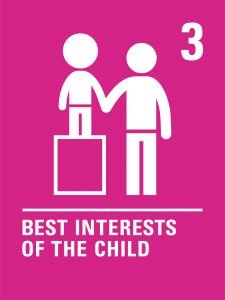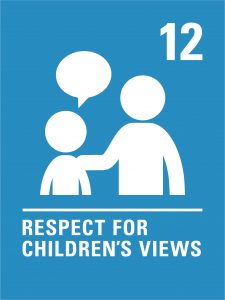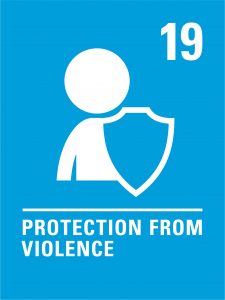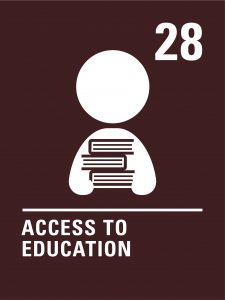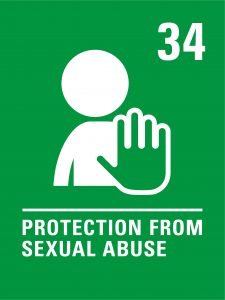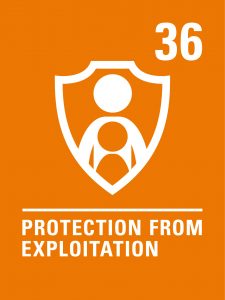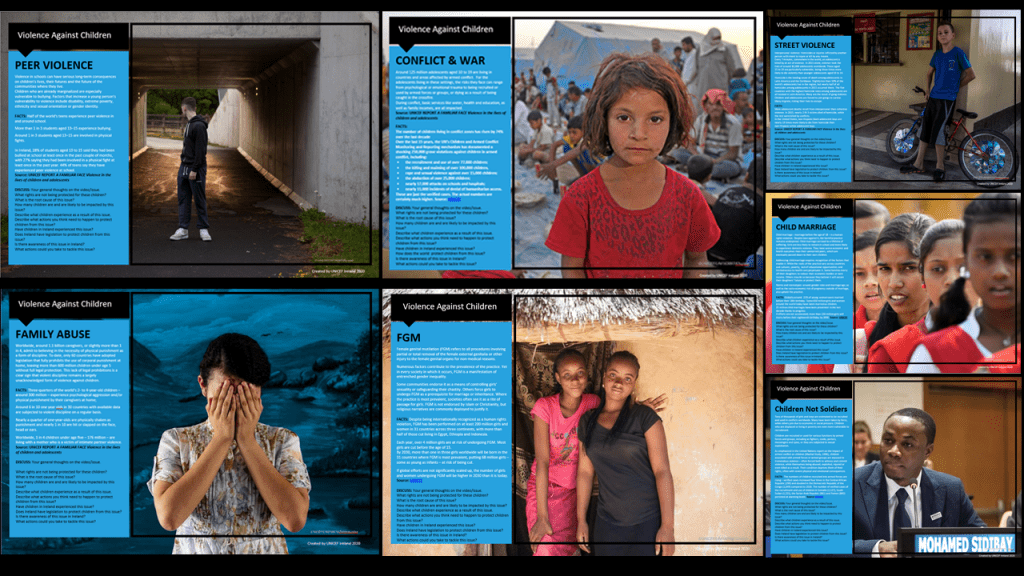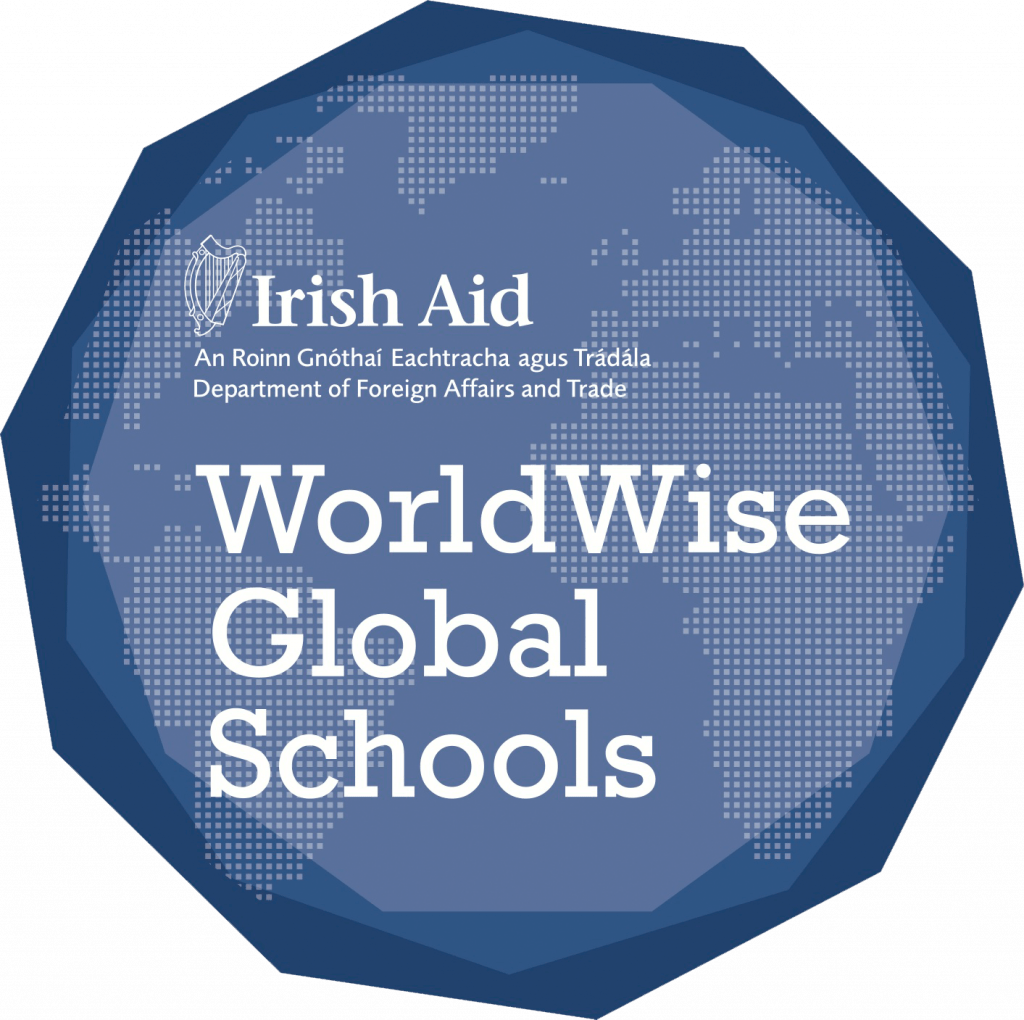Children have a right to feel safe at home, in school and in their communities.
END VIOLENCE The right of children to protection from violence is enshrined in the Convention on the Rights of the Child and yet still, one billion children will experience physical, sexual, or psychological violence at home, in school, online, and in their communities; and one child dies from violence every five minutes. Explore violence against children through a child rights perspective. Address issues like violence and bullying in school and devise interventions to support feeling safe and secure in school.
Workshop Activities
| Activity 1 | Cross the Line | 40 mins |
| Activity 2 | Global Violence Against Children | 40 mins |
| Activity 3 | Tackling Violence & Bullying in Your School | 80 mins |
| Activity 4 | Just Like Me | 30 Mins |
Learning Objectives
- Apply a rights-based approach to understanding violence against children.
- Understand the extent and impact of violence against children globally.
- Devise interventions and actions to challenge bullying in school.
Curriculum Connections
JUNIOR CYCLE
Statements of Learning
SOL 6: Has an awareness of personal values and an understanding of the process of moral decision-making.
SOL 7: Values what it means to be an active citizen, with rights and responsibilities in local and wider contexts.
SOL 9: Understands the origin and impacts of social, economic, and environmental aspects of the world around her/him.
SOL 11: Takes action to safeguard and promote her/his wellbeing and that of others
SOL 23: Brings an idea from conception to realisation
JC WELLBEING – This programme works on achieving the following Well-being indicators. Responsible – I take action to protect and promote my wellbeing and that of others Connected – I feel connected to my school, my friends, my community and the wider world. I appreciate that my actions and interactions impact on my own wellbeing and that of others, in local and global contexts. Respected – I feel that I am listened to and valued. I have positive relationships with my friends, my peers and my teachers. I show care and respect for others.
CSPE JC 1.1, 1.3, 1.8, 1.9, 1.11, 2.9, 2.10, 3.12
Geography JC 1.9, 2.2, 2.4, 2.6
SPHE JC 1.3, 1.6, 2.8, 2.9
Business Studies JC 1.1 1.7, 1.9, 1.10, 2.4, 2.5, 3.1, 3.2, 3.3, 3.6, 3.7, 3.10, 3.11 SC 1.1, 1.2, 6.1, 6.5, 6.6
CSPE 1.1, 1.8, 1.9, 1.11, 2. 1, 2.4. 2.9, 2.10
Economics 1.11.2, 1.3, 2.1, 2.2, 2.3, 2.4, 3.2,
Geography 7, 9
English OL 2, 3, 4; SC 3.4.1
History JC 1.11, 2.13, 3.12 SC 5
Politics and Society 1.2, 3.1, 4.2, 4.3, 5.1, 5.4, 6.1
Resources
Teaching Notes
It is important when leading this activity, that you are aware that people could have or are experiencing violence at home, in school, on the street or in their relationships. The discussions you have with participants in these activities need to be handled sensitively and with consideration given to students’ backgrounds and experiences. You want to make the classroom a safe place for your students to share their ideas and even experiences. Alert participants to the topic ahead of time as some learners may want to be excused from certain discussions and this should be respected. For some learners, it could be the first time they have thought about the idea that violence against children may not be acceptable or the common experience of all children. Please refer to the tools section below to download a resource on how to cover sensitive topics.
In Ireland,
% of teens say the experience peer violence at school.
Activity 1 – Cross the Line
Duration: 40 mins
The aim of this activity is to open the discussion around violence against children and get participants to reflect on its impact. Download the presentation to support activities.
Step 1: Create/Draw a line (masking tape or string) in the middle of the room, ask participants to stand together on one side of the line and cross the line in answer to the statement read aloud. Download statements for print. After each of the “cross the line” you will ask participants to pause, reflect and discuss (if appropriate), ask participants to come back together behind the line.
- Cross the line if you agree, violence against children is ok if it is used as a form of discipline or punishment. Explain this is always false– UNCRC Article 19 “States Parties shall take all appropriate legislative, administrative, social and educational measures to protect the child from all forms of physical or mental violence, injury or abuse, neglect or negligent treatment, maltreatment or exploitation, including sexual abuse, while in the care of parent(s), legal guardian(s) or any other person who has the care of the child.”
- Cross the line if you agree, that experiencing violence in childhood helps build your resilience. Explain the reality – Violence can result in death, injury, can impair brain development, impact on learning, result in harmful risk-taking behaviours, increase risk of non-communicable disease
- Cross the line if you agree, violence against children is ok if it is an accepted cultural practice. Explain the reality –Violence against children in all its forms, from the slap of a parent to the unwanted sexual advance of a peer, is harmful, morally indefensible and a violation of every child’s fundamental human rights.
- Cross the line if you know a bully, someone who misuses their power to harm, abuse, intimidate or coerce a person whom they perceive as vulnerable.
- Cross the line if you feel violence is normal and condoned in our society. Discuss
- Cross the line if you enjoy watching acts of violence, like a fight in the street, in a movie, in video games.
- Cross the line if you have used violence to get your way.
- Cross the line if you feel violence is a problem in your school. Discuss
- Cross the line if you are friends with a bully.
- Cross the line if you feel are ever threatened or intimidated by violence.
- Cross the line if it does not concern you that 1 billion children aged 2–17 years have experienced physical, sexual, or emotional violence or neglect in the past year. Discuss
- Cross the line if you or someone you know has experienced bullying.
- Cross the line if you see violence as an acceptable way to solve a dispute. Discuss
- Cross the line if words you have spoken to another person could have caused hurt or made them feel threatened.
- Cross the line if you agree that violence against children can be prevented. Discuss
- Cross the line if you have ever crossed a line that you regret.
Reflection: Close the activity by asking participants to write down a statement that reflects what, if anything they gained/learned from the exercise and what they think should be discussed further on the issue of violence against children. Leave it behind for the teacher/facilitator to follow up.
Activity 2 – Global Violence Against Children
Duration: 40 mins
The aim of this activity is to understand the types and scale of violence and abuse suffered by children around the world.
Step 1: Start the activity by noting the topic being discussed today is violence against children and the steps they can take if become upset during the discussion. (Please refer to the tools section below to download a resource on how to cover sensitive topics.) Remind the group that all children have the right to be protected from violence whether or not it is inflicted on them by parents, teachers, friends, romantic partners or strangers. And all forms of violence experienced by children, regardless of the nature or severity of the act, are harmful and illegal in Ireland.
Step 2: Play the David Beckham video and ask learners to identify some of the different forms of violence that children experience around the world.
Step 3: Divide participants into 7 groups. Assign each group a topic, Peer Violence & Bullying, Children not Soldiers, FGM, Street Violence & Homicide, Child Marriage, Family Abuse, Conflict & War ask them to watch the corresponding video and discuss using the discussion cards.
Step 4: Ask for a quick summary of the discussion from the groups. Did anything surprise them or motivate them to act? Remind
Reflection: Close the discussion by asking participants to take one minute to quietly reflect on the lesson, write down on a piece of paper how they are feeling and if they have any questions or need further support. They can fold it over and leave it on their desks for collection.
Then give each participant 2 Post-it notes, one for a positive emotion they want to leave with and one for a negative emotion they might be feeling that they want to leave behind in the classroom. Ask them to put the positive note in their bag or pocket and throw the negative note in the bin on their way out.
Peer Violence & Bullying
Children Not Soldiers
FGM
Street Violence & Homicide
Child Marriage
Family Abuse
Conflict & War
Activity 3 – Tackling Violence & Bullying in Your School
Duration: 80 mins
The aim of this activity is to explore how young people define and experience violence and bullying in school, so as to devise strategies to improve responses and prevention. NOTE: Before carrying out this activity, seek permission from the school to hold a survey on bullying. If permission is not possible, carry out the activity surveying only the group.
Discussion: Bullying is an act of violence and abuse. Being safe at school is a fundamental human right. Every child and youth has the right to be safe and free from the harmful effects of bullying. Article 19 of the CRC addresses the rights of children who are at the receiving end of bullying and harassment: Parties shall take all appropriate legislative, administrative, social and educational measures to protect the child from all forms of physical or mental violence, injury or abuse, neglect or negligent treatment, maltreatment or exploitation, including sexual abuse, while in the care of parent(s), legal guardian(s) or any other person who has the care of the child. Violence, abuse and bullying are a violation of your rights whether it happens in the home on the street or in school.
Just like crime in our communities, bullying needs to be prevented through continual awareness-raising, monitoring and responding effectively to incidences. Studies have shown that for achieving the best results, everyone within the school community must play a role. The following activities provide you with a starting point to activate or reactivate your bullying prevention programmes. Defining the problem: Understanding the problem in your school and within each year group can be helpful to tailor your response. This activity can be done through a classroom discussion or a wider school survey. Find out what types of bullying is going on, where it is happening, how visible it is and who it is directed at, and how effective the responses are. Take action on the results with the support of the school.
Step 1: Define bullying – Write each question on a separate A4 sheet of paper.
- What are the different types or examples of bullying?
- How does bullying impact on individual and school community?
- What role does power and or social hierarchy play in bullying, what are the social divides in your school eg, socio-economic, race, appearance, sexuality?
- Where and when does bullying occur and is it worse in a certain year group or peer group?
- How is bullying prevented and or responded to in your school & is it effective?
- Who are the people considered most at-risk groups of bullying and how are they protected? While bullying can happen to any pupil, it is known that some may be more vulnerable to or at risk of experiencing bullying. Such vulnerable groups include pupils with disabilities or special educational needs, those from ethnic minority and migrant groups, pupils from the Traveller community, lesbian, gay, bisexual or transgender (LGBT) pupils and those perceived to be LGBT and pupils of minority religious faiths. (DES, 2013; 4.3.2)
Give each row or group of students one of the six questions to answer. Ask each person to add their contribution to the answer and then pass the paper to the next person. The last person can read that answer to the class.
Step 2: Build a survey – Form groups based on the questions and formulate 3-5 questions to add to a survey of their, class, year, or school (depending on permission received).
Step 3: Make a Plan- Conclude by reading out the survey and asking if there are any questions that should be added to the survey. Determine how the group will carry out the survey and what actions can be achieved with the results.
Extension: Take Action – Based on the survey findings, take actions that could improve the situation in your school.
Examples include:
- Presentation on the findings: students at an assembly or newsletter and or to board of management, school principal/deputy, PTA in a meeting.
- Policy review: Anti-bullying policies; Do you know the policies and processes that are undertaken in your school to deal with bullying and violence against children. Are they reviewed regularly, are they communicated well, who has the oversight are young people part of the process, how often are students, teachers, parents surveyed to ensure procedures and monitoring is effective.
- Awareness Raising Campaign: Established evidence-based intervention strategies. What awareness-raising campaigns are out there that you think could address the problem in your school? TackleBullying.ie
- Rights-based charter: Develop and distribute a rights-based charter with the whole school and ensure every student receives their own copy of the charter.
Activity 4 – Just Like Me
Duration: 30 Mins
The aim of this activity is to build empathy and solidarity with their peers.
Step 1: Get everyone to close their eyes. Ask them to think of the people in school and picture a person who they think could be vulnerable to bullying, violence, discrimination. They might be someone who has a disability, someone who is socially awkward, someone who is too popular, someone who stands out because of their race, their nationality, their sexuality, someone who is dealing with poverty or a health concern. Face them in your mind and take their hands in your hands and look them in the eyes. Notice what you have in common with them.
Step 2: Read out the following sentences.
- Like you, they are human,
- Like you, they have rights,
- Like you, they have hopes and dreams,
- Like you, they want to feel a connection,
- Like you, they want to be liked,
- Like you, they want friendship,
- Like you, they want to feel safe,
- Like you, they want to be included,
- Like you, they sometimes feel lonely,
- Like you, they sometimes feel hurt,
- Like you, they sometimes feel sad,
- Like you, they have felt anger and resentment,
- Like you, they can feel inadequate,
- Like you, they need support from their peers,
- Like you, they need school to be safe,
- Like you, they need to feel loved,
- Now make a wish for them, this can be that they feel happy, that they have their needs met, that they succeed, whatever wish you want.
- Now pledge something you can do to support them.
- Open your eyes in your own time
Step 3: Hand out a card to participants. Ask them to write down a pledge/commitment that they will take to prevent bullying and violence in their school. Based on the “Just Like Me” exercise from nobully.org
Take Action
We all have responsibility for achieving the Sustainable Development Goals by 2030. Below are the goals and their targets that address violence against children. Use them, along with the Convention on the Rights of the Child to support your call to take action and address these issues. Below are just a few suggestions of actions you can take.
Tools
Explore
This activity can help your school achieve a Global Passport Award. Learn more or apply at WWGS’s Global Passport Award.
Funded by Irish Aid’s WorldWise Global Schools – contents are the responsibility of its author and do not necessarily represent or reflect WWGS and or Irish Aid policy.
